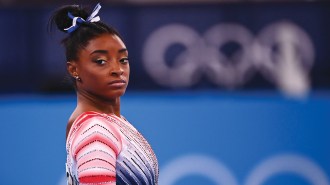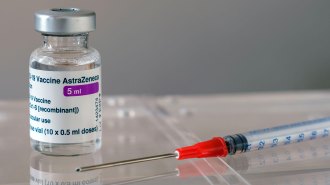Search Results
The Black Death’s genetic legacy
Students will read and answer questions about the online Science News article “Black Death immunity came at a cost to modern-day health.” A version of the article, “Plague immunity left a lasting mark,” appears in the November 19, 2022 issue of Science News.
Let population genetics be your guide to evolution
Population genetics bridges the basic concepts of genes and inheritance, often studied at the individual level, with the larger concept of how a species evolves. In this discussion, students will review basic genetics concepts and investigate an example of evolution within the human population.

How Much Heat Can We Handle?
Summers are getting hotter. Use this guide to help students explore the science of heat and its effects on the body, and then apply what they learn through diagramming.

Mental Gymnastics
In this guide, students will learn about psychological tools that are helping elite athletes in competitions and everyday life, analyze data visualizations and discuss how the psychological tools might be applied to students' own lives.
Grappling with graphs and other data visualizations
Students will discuss the uses of data visualizations, analyze visualizations from a Science News article, and think about how psychological tools used by elite athletes might benefit their own lives.
Being mindful of mental health
Students will answer questions about the online Science News article “How mindfulness-based training can give elite athletes a mental edge,” which explores new research into psychological tools to improve mental health. A version of the article, “Mental gymnastics,” appears in the January 29, 2022 issue of Science News.
- Exercise type:Activity
- Topic:Health & Medicine
- Category:Coronavirus
- Category:Data Analysis
- Category:Diversity in STEM
A fair shot
Students will analyze a graph to identify inequities in COVID-19 vaccine access among nations based on wealth, discuss how affluence affects access to and distribution of vaccines as well as how disparities in vaccine distribution affect global pandemic recovery. Students will then work in groups to research COVID-19 vaccine access and distribution in their state or local area, identify potential inequities in vaccine access and distribution and construct a graph of their own.

Vaccine Inequity Will Prolong Pandemic
In this guide, students will learn about challenges in vaccinating the world against COVID-19. Then, students will discuss the possible effects of varying vaccination rates on local and global scales.
Global problem solving gets personal
Students will think about how communities connect on local and global scales through the lens of COVID-19 vaccine distribution and consider why global collaboration in STEM is crucial for solving some large-scale issues.
Counting on COVID-19 vaccines
Students will answer questions about the online Science News article “Global inequity in COVID-19 vaccination is more than a moral problem,” which explores the scientific and economic impacts of the failure to fairly distribute vaccines globally. A version of the story, “Vaccine inequity will prolong pandemic,” appears in the March 27, 2021 issue of Science News.

Our Brains, Our Futures
In this guide, students will explore how brain science has progressed over the last century and how that progress could inform the field’s future. Then, students will discuss the ethics of advancements in neurotechnology.
Neuroscience fiction and fact
Students will answer questions about the online Science News article “Three visions of the future, inspired by neuroscience’s past and present,” which explores how advances in the field of neuroscience are bringing scientists closer to expanding, linking and healing human brains. A version of the story, “Our brains, our futures,” can be found in the March 13, 2021 issue of Science News.